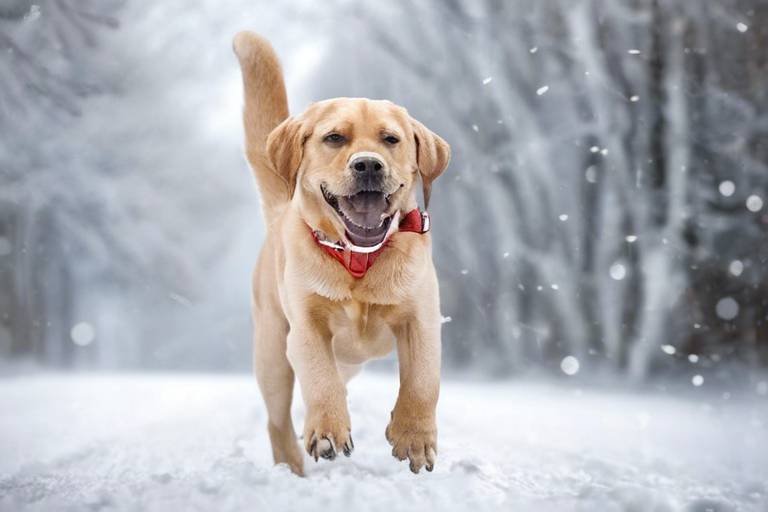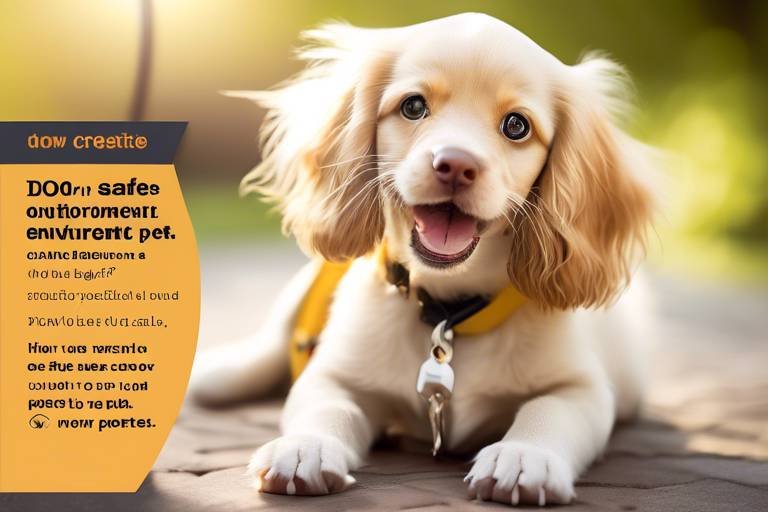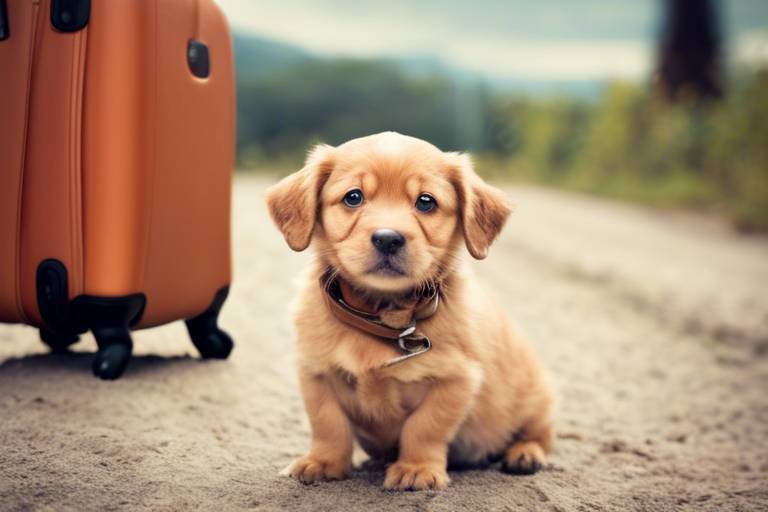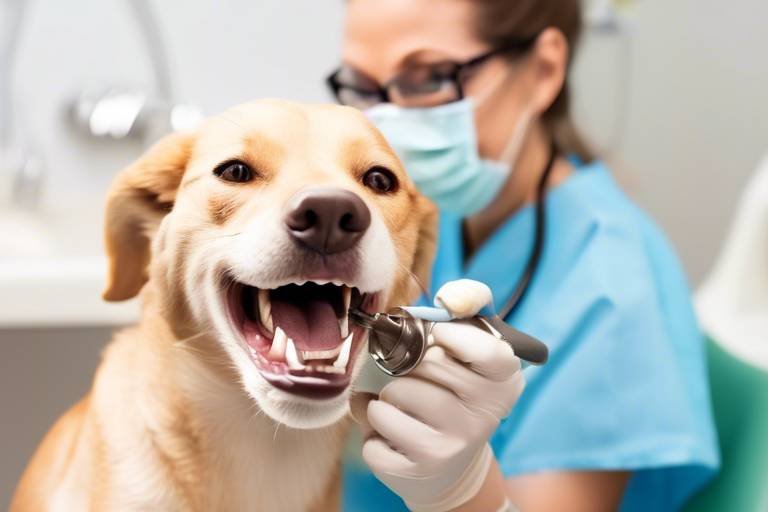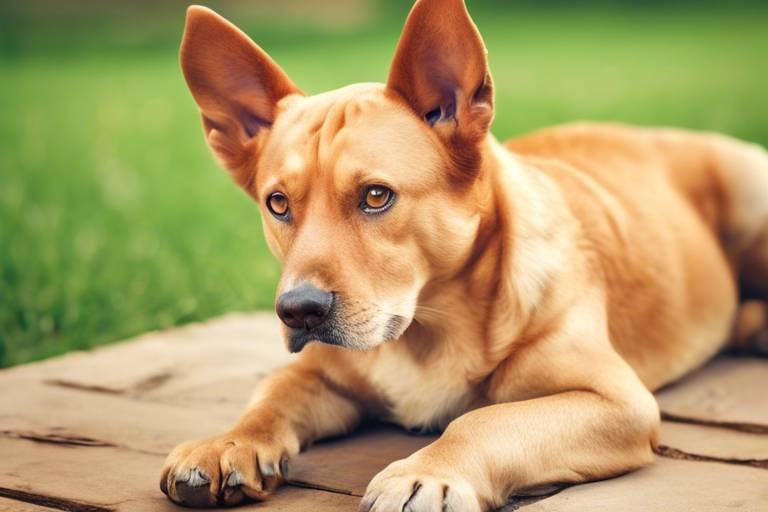Winter Health Tips for Keeping Your Pets Safe
As the cold winds blow and the snow begins to blanket the ground, our furry friends may need a little extra care to stay healthy and safe. Winter can be a magical time filled with fun activities like snowball fights and cozy nights by the fire, but it also brings unique challenges for pet owners. It’s crucial to be aware of the potential risks that winter poses to your pets. From the biting cold to icy surfaces, understanding how to keep your pets safe is essential. This article provides essential tips to ensure your pets remain healthy and safe during the winter months, covering various aspects from nutrition to grooming and outdoor safety.
Winter can pose unique health risks to pets, including hypothermia and frostbite. These conditions can be dangerous and, in severe cases, even life-threatening. Hypothermia occurs when a pet's body temperature drops below the normal range, which can happen quickly in cold weather. Frostbite, on the other hand, affects the extremities like paws, ears, and tails, leading to tissue damage. Recognizing these dangers is crucial for pet owners to take preventive measures and keep their furry friends safe. Always monitor your pets during outdoor activities and be aware of the signs of cold stress, such as shivering, lethargy, or reluctance to walk. These signs can indicate that your pet is too cold and needs to come indoors.
Adjusting your pet's diet during winter is important as their energy needs may change. Just like us, pets can burn more calories trying to stay warm in colder temperatures. It’s essential to provide them with a balanced diet that supports their energy levels. Consider foods that are rich in protein and healthy fats, as these can help maintain their body heat. Additionally, you might want to explore the best foods and supplements to keep your pets healthy and active during the colder months. Consult your veterinarian for personalized recommendations based on your pet's specific needs.
Despite colder temperatures, pets still need plenty of water. It’s a common misconception that pets drink less in winter because they’re not as active, but hydration remains crucial. Discovering tips to ensure your pets stay hydrated, even when they may be less inclined to drink, can make a world of difference. Always provide fresh water indoors, and consider using a heated water bowl to prevent freezing. This ensures your pets always have access to water, keeping them hydrated and healthy.
Providing fresh water indoors is essential. Explore various ways to keep your pets hydrated inside during winter. A heated water bowl is a fantastic investment, as it keeps the water at a comfortable temperature, encouraging your pets to drink more. Additionally, you can place multiple water bowls around your home to ensure they always have access, especially if they’re roaming around.
When outside, ensure your pet has access to water that isn’t frozen. It’s important to check their water supply regularly during outdoor activities in winter. You can carry a portable water bottle designed for pets, which makes it easy to offer them a drink during your winter adventures. Remember, just because it’s cold outside doesn’t mean your pet doesn’t need to hydrate!
Regular grooming is vital during winter to maintain your pet's coat and skin health. The cold, dry air can lead to skin issues, so keeping their fur clean and well-groomed is essential. Find out how to properly groom your pet to protect them from the cold. Brushing helps remove dead hair and distributes natural oils, keeping their coat healthy and insulated. Additionally, consider using moisturizing sprays to combat dryness. Regular grooming sessions can also be a great opportunity to check for any signs of skin irritation or other health issues.
Engaging in outdoor activities is still possible during winter, but safety is key. Discover safe practices for exercising your pets in cold weather while avoiding potential hazards. Always keep your pet on a leash when outside, as snow can obscure familiar scents and landmarks, making it easy for them to get lost. Look for trails that are safe and well-maintained, and avoid areas with ice or deep snow that could pose a risk of injury.
Investing in appropriate winter gear can protect your pet from the elements. Learn about essential clothing and accessories to keep your pets warm and safe outside. For instance, a well-fitted dog coat can provide extra warmth, while booties can protect their paws from ice and salt. Just like us, pets can benefit from extra layers during the chilly months, so don’t hesitate to gear them up!
Understanding the signs of cold stress in pets is crucial for their well-being. Familiarize yourself with symptoms to watch for, such as excessive shivering, whining, or seeking shelter. If you notice these signs, bring your pet indoors immediately and warm them up gradually. Being proactive about your pet's comfort can help prevent serious health issues and ensure they enjoy the winter season just as much as you do.
- How can I tell if my pet is too cold? Look for signs like shivering, whining, or reluctance to walk. If they seem uncomfortable, it's time to head indoors.
- Should I change my pet's diet in winter? Yes, consider a diet higher in protein and fats to help them maintain energy levels in the cold.
- Is it safe to walk my dog in the snow? Yes, but make sure to keep them on a leash and avoid icy areas.

Understanding Winter Risks for Pets
As the winter months roll in, it's essential to be aware of the unique health risks that pets face during this chilly season. Just like us, our furry companions can suffer from cold-related ailments, making it crucial for pet owners to stay informed and proactive. One of the most significant dangers is hypothermia, which occurs when a pet's body loses heat faster than it can produce it. This condition can be life-threatening if not addressed promptly. Signs of hypothermia include shivering, lethargy, and even difficulty walking, which can escalate quickly if the pet is not brought to a warmer environment.
Another serious concern is frostbite, particularly on sensitive areas such as the ears, paws, and tail. Frostbite occurs when the skin and underlying tissues freeze, leading to potential permanent damage. If you notice your pet's skin turning pale or blue, or if they are excessively licking a particular area, these could be signs of frostbite. It's vital to warm the affected areas gradually and seek veterinary assistance if you suspect frostbite has occurred.
Beyond hypothermia and frostbite, winter can bring other challenges, such as increased risk of injuries from slips on icy surfaces or exposure to harmful chemicals like antifreeze, which is often used in cars during this season. Antifreeze has a sweet taste that can attract pets, but it is highly toxic and can cause severe health issues. Therefore, it's essential to be vigilant and keep your furry friends away from areas where these substances may be present.
Moreover, during winter, many pets tend to be less active, which can lead to weight gain and associated health problems. It's crucial to monitor your pet's activity levels and adjust their diet accordingly. Regular exercise, even in colder weather, is vital for maintaining their health. However, it should be done with caution, ensuring that your pet is dressed appropriately for the conditions.
In summary, understanding these winter risks is the first step in ensuring your pets remain safe and healthy during the colder months. By being aware of the signs of cold stress and taking preventive measures, you can help your furry friends enjoy a happy and safe winter season.

Proper Nutrition in Cold Weather
As the winter chill sets in, it's not just us who feel the bite of the cold; our furry companions do too! The change in temperature can significantly affect your pet's nutritional needs. During this season, pets may require more calories to help maintain their body heat. Just like we bundle up in layers, our pets need a boost in their diet to keep them warm and healthy. But what does that really mean? Let’s dive deeper into how to adjust your pet's nutrition for the cold months ahead.
First and foremost, it's essential to consider the type of food you are providing. Opting for a quality, high-energy diet can make a world of difference. Look for pet foods that list meat as the primary ingredient, as protein is crucial for keeping their energy levels up. Ingredients such as chicken, beef, or fish can help fuel your pet's metabolism and keep them warm. Additionally, you might want to explore specialized winter formulas that are designed to meet the increased energy needs of pets during colder months.
Supplements can also play a vital role in your pet's winter diet. Omega-3 fatty acids, found in fish oil, are great for maintaining a healthy coat and skin, which can be particularly vulnerable to the dry winter air. Consider adding a supplement to your pet's meals to help keep their skin hydrated and their coat shiny. Always consult your veterinarian before introducing new supplements to ensure they are suitable for your pet's specific needs.
Now, let’s not forget about hydration! While it may seem counterintuitive, pets still need plenty of water during the winter months. Cold weather can often lead to dehydration, especially if your pet is consuming dry kibble. To ensure your furry friend stays hydrated, consider providing wet food in their diet, which can help increase their water intake. A mix of dry and wet food can be an effective way to keep your pet hydrated while still meeting their caloric needs.
Here’s a quick comparison of food types and their benefits:
| Food Type | Benefits |
|---|---|
| Dry Kibble | Convenient, helps with dental health, energy-dense. |
| Wet Food | Higher moisture content, more palatable, easier to digest. |
| Raw Diet | Natural nutrients, promotes healthy coat, can be tailored to specific needs. |
Feeding your pet during winter isn’t just about quantity; it’s also about quality. Make sure to monitor their weight and adjust portions as necessary. If you notice your pet is gaining a bit too much weight, consider reducing their food intake slightly. On the flip side, if they seem to be losing weight, it might be time to increase their portions. Regular check-ups with your vet can help keep track of your pet's health and ensure they are on the right track.
In summary, keeping your pets well-nourished during the winter months is crucial for their overall health and well-being. By providing a balanced diet rich in proteins and healthy fats, ensuring hydration, and possibly introducing supplements, you can help your furry friends thrive even in the coldest of seasons. Remember, a healthy pet is a happy pet, and with a little extra care in their diet, you can make this winter a cozy and enjoyable time for both of you!
Hydration Needs in Winter
When the winter chill sets in, many pet owners might assume that their furry friends need less water. However, just like humans, our pets require adequate hydration regardless of the season. In fact, hydration is crucial for maintaining your pet's overall health, especially during the colder months when they may be less inclined to drink. Cold weather can lead to dry air, which can dehydrate your pets more quickly than you might realize. So, how can you ensure your pets stay hydrated even when the temperature drops?
First, it's essential to understand that pets are often less thirsty in winter because they are not as active outdoors. They may not pant as much, which is a natural signal for them to drink water. To combat this, consider placing multiple water bowls around your home. This way, your pet has easy access to water no matter where they are lounging. You can also try using a pet water fountain, which keeps the water flowing and can pique your pet's interest, encouraging them to drink more.
Another effective strategy is to incorporate moisture-rich foods into your pet's diet. For instance, if your dog or cat enjoys wet food, this can significantly contribute to their hydration levels. You might also want to add a splash of warm water to their kibble to create a delicious gravy that not only enhances flavor but also boosts hydration. Always remember to monitor your pet's water intake and adjust accordingly. If you notice they are drinking less than usual, it might be time to consult your veterinarian.
Providing fresh water indoors is essential, especially since pets often spend more time inside during winter. One excellent solution is to invest in a heated water bowl. These bowls prevent water from freezing, ensuring your pet always has access to fresh drinking water. Additionally, check the water levels regularly and refill as necessary, as pets might not drink as much if the water is stale or dirty. Remember, clean water is vital for your pet's health!
When venturing outdoors, ensuring your pet has access to non-frozen water is crucial. If you're going for a long walk or playing in the snow, consider bringing along a portable water bowl. You can fill it with water before heading out and offer it to your pet during breaks. If you're at a park or an area where water sources are available, always check to ensure they are not frozen before allowing your pet to drink.
In summary, keeping your pet hydrated during the winter months is just as important as in the summer. By providing easy access to water, incorporating moisture-rich foods, and being mindful of their hydration needs, you can help your furry friend thrive even in the coldest weather!
- How much water should my pet drink in winter? - The amount varies by size and activity level, but generally, pets should drink about 1 ounce of water per pound of body weight daily.
- What are signs of dehydration in pets? - Look for symptoms like dry gums, lethargy, and loss of skin elasticity.
- Can I give my pet warm water? - Yes, warm water can be more appealing to pets in winter and can help keep them hydrated.
- Are heated water bowls safe for pets? - Absolutely! Just ensure they are designed for pet use and check them regularly for any signs of wear.
Indoor Water Sources
Ensuring that your furry friend stays hydrated during the winter months is just as important as keeping them warm. Despite the chilly temperatures, pets still require a consistent supply of fresh water. You might be surprised to learn that many pets drink less in winter because they often don’t feel as thirsty. This can lead to dehydration, which can have serious health implications. So, how can you encourage your pet to drink enough water indoors? Here are some effective strategies to keep your pets hydrated:
One of the simplest solutions is to provide multiple water bowls around your home. This encourages your pet to drink more frequently, as they won’t have to search for a single source. It’s also a good idea to place these bowls in areas where your pet spends most of their time, like near their bed or favorite lounging spot. Make sure to change the water daily to keep it fresh and appealing.
If your pet seems particularly disinterested in drinking, consider investing in a pet water fountain. These fountains circulate water, making it more enticing for pets to drink. The sound of flowing water can catch their attention and encourage them to hydrate more often. Plus, many pets prefer drinking from moving water sources, as it mimics natural conditions.
Another great option is to provide heated water bowls. These are especially useful in extremely cold climates where water can freeze quickly. Heated bowls maintain a moderate temperature, ensuring that your pet always has access to liquid water. Not only does this prevent freezing, but it also encourages your pet to drink more, as they won’t be deterred by the cold.
Don’t forget about the importance of wet food in your pet's diet during winter. If your pet enjoys canned food, this can significantly contribute to their overall hydration. Wet food contains a high percentage of moisture, which can help keep your pet hydrated even if they aren’t drinking as much water. Just ensure that their diet remains balanced and appropriate for their specific needs.
In conclusion, keeping your pet hydrated during the winter is essential for their health and well-being. By providing multiple water sources, considering a water fountain or heated bowl, and incorporating wet food into their diet, you can ensure that your furry friend stays hydrated and happy throughout the colder months.
- How much water does my pet need in winter? Generally, a pet needs about 1 ounce of water per pound of body weight per day, but this can vary based on their activity level and diet.
- Can I give my pet ice cubes for hydration? While some pets enjoy chewing on ice cubes, it’s best to provide them with fresh water instead to ensure they are adequately hydrated.
- What signs indicate my pet is dehydrated? Look for signs like dry gums, lethargy, and decreased skin elasticity. If you notice these, consult your veterinarian.
Outdoor Water Considerations
When winter rolls in, it’s easy to forget that your furry friends still need access to fresh water, even when the temperatures drop. It’s a common misconception that pets will naturally drink less when it’s cold outside, but this isn’t always the case. In fact, keeping your pets hydrated is just as crucial in winter as it is in summer. So, how can you ensure your pets have access to water that isn’t frozen during those chilly outdoor excursions?
First off, it’s important to understand that water can freeze quickly in low temperatures. This means that if you’re planning to spend time outdoors with your pet, you need to have a strategy in place to keep their water supply accessible. One effective solution is to use insulated water bowls. These bowls are designed to retain heat, preventing the water from freezing as quickly. If you’re out for an extended period, consider bringing a thermos filled with warm water to refill your pet’s bowl periodically.
Another option is to invest in a heated water bowl. These bowls are especially beneficial for pets that spend a lot of time outdoors. They maintain a consistent temperature, ensuring that your pet always has access to fresh, unfrozen water. Just make sure to check the bowl regularly to ensure it’s functioning properly, especially during those bitterly cold days.
When planning outdoor activities, it’s also wise to be mindful of the duration of your outings. If it’s particularly cold, limit the time your pet spends outside, and make sure to bring along water. You can also encourage your pet to drink by offering them water during breaks. This not only helps keep them hydrated but also gives them a moment to rest and recharge.
Lastly, always keep an eye on your pet’s behavior. If they seem lethargic or are panting excessively, it could be a sign they are dehydrated. In such cases, offering them water immediately is crucial. Remember, just because it’s cold outside doesn’t mean your pet’s hydration needs disappear. Keeping them hydrated helps maintain their energy levels and overall health, ensuring they can enjoy the winter months just as much as you do!
- How often should I check my pet's water supply in winter? It's best to check their water supply every hour if they are outside for extended periods. Make sure it’s fresh and not frozen.
- Can I use regular bowls for outdoor water? While you can, it’s advisable to use insulated or heated bowls to prevent freezing.
- What are the signs of dehydration in pets? Look for signs like dry gums, lethargy, and decreased appetite. If you notice these symptoms, offer them water immediately.
Grooming for Winter Health
When winter rolls in, the cold weather can take a toll on your pet's coat and skin. Just like we bundle up in cozy sweaters and scarves, our furry friends also need some extra care to stay comfortable and healthy during these chilly months. Grooming is not just about keeping them looking good; it plays a vital role in maintaining their overall health. Regular grooming helps to prevent matting and keeps their skin free from irritants that can worsen in dry winter air.
One of the first things to consider is the type of coat your pet has. For instance, long-haired breeds tend to get mats and tangles more easily in winter. These mats can trap moisture and lead to skin problems, so it’s essential to brush them regularly. On the other hand, short-haired breeds may require less brushing but can still benefit from occasional grooming to remove loose hairs and distribute natural oils. As a general rule, aim to brush your pet at least once a week, if not more frequently.
Moreover, don’t forget about bathing! While it might seem counterintuitive to bathe your pet in the winter, keeping their coat clean is essential. Just be cautious about how often you do it. Over-bathing can strip their skin of natural oils, leading to dryness and irritation. A good rule of thumb is to bathe your pet every 4 to 6 weeks during winter, using a moisturizing shampoo designed for pets. After a bath, make sure to dry them thoroughly, especially around the ears and paws, to prevent any chill.
Another important aspect of winter grooming is paw care. Snow, ice, and salt can irritate your pet's paws. After walks, check their paws for any signs of cracking or irritation. You might want to consider applying a paw balm to keep their pads moisturized and protected. Additionally, trimming the fur between their paw pads can help prevent ice and snow from accumulating, which can be both uncomfortable and hazardous.
Lastly, don’t underestimate the power of a good grooming session to strengthen your bond with your pet. It’s a time for you to connect, check for any unusual lumps or bumps, and ensure they are healthy and happy. So, grab that brush and make grooming a regular part of your winter routine. Your pet will thank you for it!
- How often should I groom my pet in winter? Aim for at least once a week, but adjust based on your pet's coat type.
- Can I bathe my pet during winter? Yes, but use a moisturizing shampoo and ensure they are thoroughly dried afterward.
- What should I do if my pet’s paws are irritated? Check for cracks, clean their paws after walks, and consider using a protective paw balm.
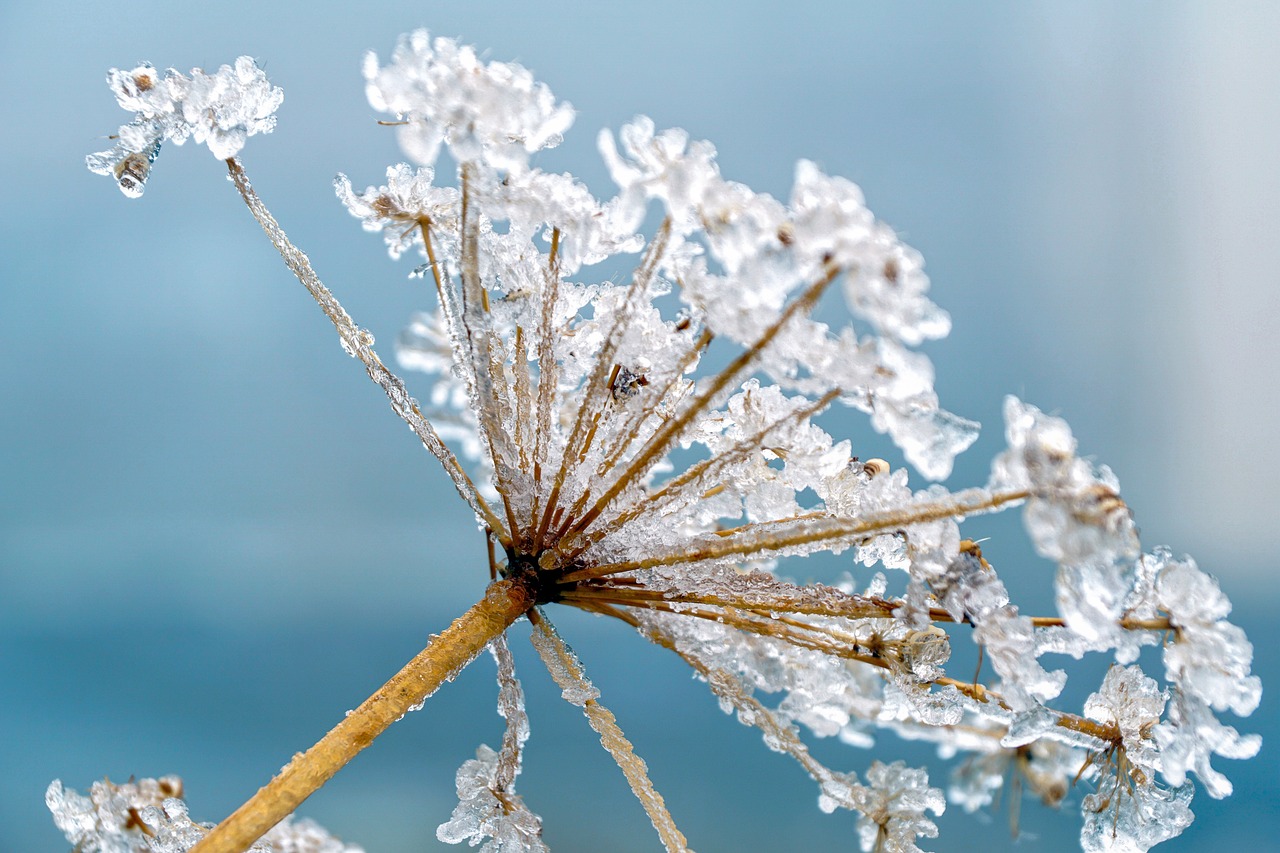
Safe Outdoor Activities
Engaging in outdoor activities during the winter months can be a delightful experience for both you and your furry friends. However, ensuring their safety while having fun is paramount. Picture this: a snowy landscape, your dog bounding through the snow, tail wagging with joy. It's a beautiful sight, but without the right precautions, it can quickly turn into a dangerous situation. So, how can you make sure that your winter adventures remain safe and enjoyable?
First and foremost, it's crucial to monitor the temperature. Just because your pet has a thick coat doesn't mean they are immune to the cold. Many breeds are more sensitive to low temperatures than others. For instance, small dogs, puppies, and elderly pets are particularly vulnerable to the chill. If the temperature dips below 32°F (0°C), consider limiting outdoor playtime. Instead, opt for shorter walks and play sessions, ensuring your pet stays warm and comfortable.
Another important aspect is to choose the right location for your outdoor activities. Avoid areas where the ground is icy or covered in deep snow, as these conditions can pose a risk for slips and falls. Instead, look for designated dog parks or trails that are cleared and safe for pets. Always keep an eye out for potential hazards such as frozen ponds or lakes, which can be tempting but are extremely dangerous.
When it comes to outdoor gear, investing in appropriate winter clothing for your pet can make a world of difference. Consider getting a warm jacket or sweater, especially for short-haired breeds. Booties can also protect their paws from salt and ice, which can cause irritation and injury. If your pet is hesitant to wear these items at first, be patient and allow them to get used to the gear gradually.
It's also vital to stay hydrated. While you might think that your pet doesn’t need as much water in winter, that's a common misconception. Cold weather can be dehydrating, especially if your pet is active. Always carry fresh water with you during your outings, and take breaks to let your pet hydrate. If you're in an area where water sources are available, ensure they are not frozen over.
Lastly, be aware of the signs of cold stress in your pets. If you notice your dog shivering, lifting their paws off the ground, or showing signs of lethargy, it's time to head indoors. Understanding these signs can help you respond quickly and keep your pet safe from the harsh winter elements.
- How long can I keep my pet outside in winter? It depends on the breed and individual tolerance. Generally, limit outdoor time to 15-30 minutes in extreme cold.
- What should I do if my pet gets cold? Bring them inside immediately, wrap them in a warm blanket, and monitor their temperature.
- Are there specific breeds that are more suited for winter activities? Yes, breeds like Huskies and Malamutes are naturally equipped for cold weather, while others may require extra protection.
- Can I use human winter gear for my pets? While some items may fit, it's best to use gear specifically designed for pets to ensure comfort and safety.
Choosing the Right Gear
When winter rolls in, it’s not just humans who need to bundle up; our furry friends do too! The right gear can make all the difference in keeping your pets warm and comfortable while they enjoy the great outdoors. Think of it like dressing for a chilly day yourself—would you head out in just a t-shirt? Of course not! Just like you, your pets need appropriate clothing to shield them from the biting cold, wind, and snow.
First and foremost, consider investing in a quality winter coat for your pet. This is especially important for breeds that have shorter hair or are not naturally equipped to handle cold temperatures. A well-fitted coat can provide an extra layer of insulation, keeping your pet cozy. Look for materials that are both waterproof and windproof, as these features will help protect your pet from the elements. Additionally, ensure the coat fits snugly but allows for movement; you wouldn’t want your pet to feel restricted while frolicking in the snow!
Next on the list is booties. Yes, you heard that right! Booties are not just for fashion—they serve a practical purpose. Snow, ice, and salt can be harsh on your pet’s paws, leading to irritation or even injury. Booties can protect their paws from freezing temperatures and harmful de-icing chemicals. It may take some time for your pet to get used to wearing them, but with patience and positive reinforcement, they’ll be strutting around like a pro in no time!
Don’t forget about accessories like scarves and hats. While these might seem like cute additions, they can actually help keep your pet warm, especially around their neck and ears. Just be sure to choose items that are comfortable and won’t obstruct their vision or movement. A snug scarf can provide warmth without being too bulky, allowing your pet to enjoy their winter adventures without a hitch.
Lastly, always keep in mind that some pets may require more gear than others. For instance, senior pets or those with health issues might need additional protection. It’s essential to monitor your pet during outdoor activities and be mindful of their comfort level. If they seem to be shivering or reluctant to move, it might be time to head back indoors and warm up with a cozy blanket and some cuddles.
In summary, choosing the right gear for your pets during winter is crucial for their safety and comfort. Whether it’s a stylish coat, protective booties, or warm accessories, the right equipment can transform a freezing outing into a fun and enjoyable experience. So gear up, head out, and make the most of the winter wonderland with your furry companions!
- What type of coat is best for my dog?
Look for a coat that is waterproof and insulated. Materials like fleece and down are excellent for warmth. - How can I get my pet used to wearing boots?
Start by letting them wear the boots indoors for short periods, gradually increasing the time as they become more comfortable. - Are there any pets that don’t need winter gear?
Some breeds, like Huskies and Malamutes, have thick fur and may not need additional gear. However, always monitor them for signs of cold stress.
Recognizing Signs of Cold Stress
When the temperatures drop, our furry companions can be at risk of cold stress, which can lead to serious health issues if not addressed promptly. It's essential for pet owners to be vigilant and recognize the signs that their pets may be struggling with the cold. Just like humans, pets can experience discomfort and health problems due to extreme weather conditions. So, what should you look for? Here are some key indicators of cold stress in pets:
- Shivering: If your pet is trembling or shaking, it’s a clear sign they’re feeling the chill. Just like you might reach for a blanket when cold, your pet is trying to cope with the low temperatures.
- Seeking Shelter: If your pet is constantly trying to find warm places to hide, it’s a signal that they’re uncomfortable. They might be looking for a cozy corner or even trying to burrow into blankets.
- Decreased Activity: Pets that usually enjoy playing might suddenly become lethargic. If your energetic pup is now lounging around, it might be due to the cold weather affecting their energy levels.
- Unusual Behavior: Changes in behavior, such as whining or barking more than usual, can indicate that your pet is distressed by the cold. They may be trying to communicate that they’re uncomfortable or in pain.
- Frostbite Symptoms: Pay close attention to the extremities—ears, paws, and tails. If you notice discoloration or swelling, it could be frostbite, which requires immediate veterinary attention.
Recognizing these signs early can make a significant difference in your pet's health and safety. If you suspect your pet is experiencing cold stress, it’s crucial to take action quickly. Bring them indoors, wrap them in a warm blanket, and consider consulting a veterinarian if symptoms persist. Remember, prevention is key! Keeping a close eye on how your pet behaves during the colder months can help you ensure they stay happy and healthy.
Q: How long can pets stay outside in cold weather?
A: It depends on the breed, age, and health of your pet. Generally, small or short-haired breeds are more susceptible to cold and should be brought indoors after short periods, while larger breeds may tolerate the cold better. Always monitor your pet closely for signs of discomfort.
Q: What should I do if my pet shows signs of cold stress?
A: Immediately bring your pet inside to a warm environment, wrap them in a blanket, and provide them with fresh water. If symptoms like shivering or lethargy persist, it's best to consult your veterinarian.
Q: Can I use dog sweaters or coats for my pet?
A: Absolutely! Dog sweaters and coats can provide extra warmth and protection against the cold. Just make sure they fit properly and don’t restrict movement.
Q: Are certain breeds more susceptible to cold weather?
A: Yes, smaller breeds and those with short coats are generally more sensitive to cold temperatures. Breeds like Chihuahuas and Greyhounds may require extra layers during winter months.
Frequently Asked Questions
- What are the signs of hypothermia in pets?
Hypothermia in pets can manifest through shivering, lethargy, weakness, and even difficulty breathing. If your pet seems unusually cold or is reluctant to move, it's essential to bring them indoors and warm them up gradually.
- How can I ensure my pet stays hydrated in winter?
Even in winter, pets need access to fresh water. Consider using heated water bowls to prevent freezing, and encourage your pet to drink by offering water frequently, especially after outdoor activities.
- Is it safe to walk my dog in the snow?
Yes, walking your dog in the snow can be safe, but it's crucial to monitor their comfort level. Keep walks shorter in extreme cold, and consider protective gear like booties to shield their paws from ice and salt.
- What type of food should I feed my pet during winter?
During winter, pets may require more calories to maintain their energy levels. Opt for high-quality, nutrient-dense foods and consult your vet about any necessary dietary adjustments or supplements.
- How often should I groom my pet in winter?
Regular grooming is essential in winter to prevent matting and skin issues. Aim to groom your pet at least once a week, focusing on removing loose fur and checking for any skin irritations.
- What should I do if my pet shows signs of cold stress?
If you notice symptoms like excessive shivering, whining, or reluctance to walk, bring your pet indoors immediately. Wrap them in a warm blanket and monitor their condition closely.
- Are there any specific breeds that are more susceptible to cold weather?
Yes, smaller or short-haired breeds are generally more vulnerable to cold weather. Breeds like Chihuahuas and Greyhounds may need extra protection, such as sweaters or coats, when outside in chilly conditions.
- Can I leave my pet outside for extended periods in winter?
It's not advisable to leave pets outside for long periods in winter, especially in extreme cold. Always provide a warm shelter, and check on them frequently to ensure they are safe and comfortable.

